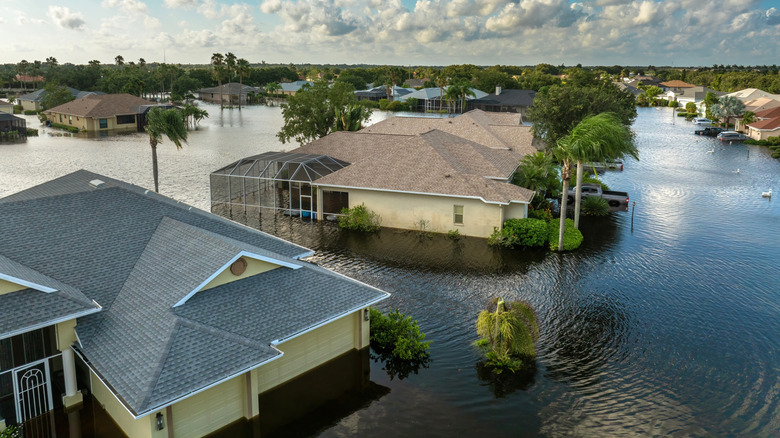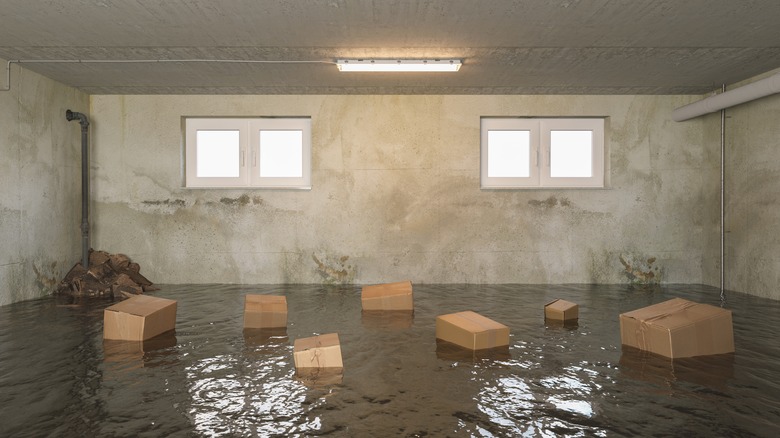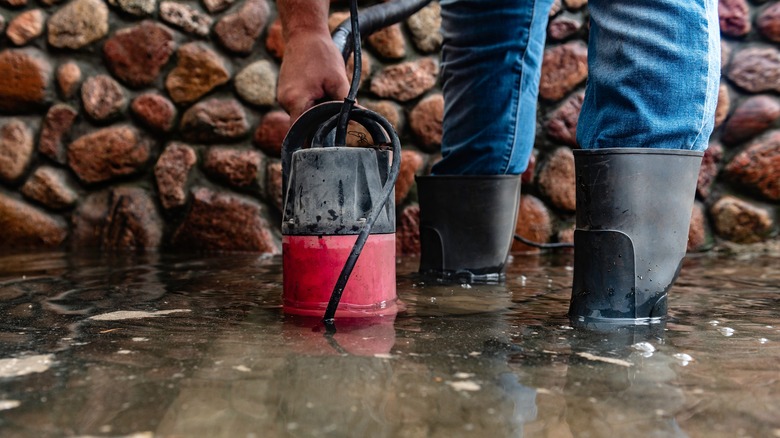What Are Flood Vents, And How Can They Protect Your Home During A Storm?
Dangerous flooding and water damage has been discussed widely in the news of late, as an atmospheric river hit California, flood warnings lit up in Washington, and Storm Claudia raged over Portugal, Britain, and more — all within the span of one week in November 2025. Even more flooding is to be expected since climate change is predicted to further ramp up global weather events for the foreseeable future. If you experience a catastrophic weather event at home, there are ways you can seal your doors from flooding with things you already own.
However, the Federal Emergency Management Agency (FEMA) recommends taking preemptive actions to mitigate any risks to your family and property. One of its main suggestions in a brochure titled "Protect Your Home from Flooding" is to install flood vents in your garage and crawlspaces. Flood vents are small, permanent openings in the lower half of a wall that allow water to pass straight through, preventing the buildup of water pressure that might destroy your home's foundation. These vents work particularly well with walls that are made of flood-proof materials, such as a multilayered, drainable drywall assembly.
That said, you'll have to be careful with spaces like your garage. If major mechanical or electrical equipment isn't raised above ground level, you still risk incurring permanent damage. Even then, it'll be easier to replace your HVAC or plumbing systems than it will be an entire wing of your house if the foundation cracks, so flood vents are worth looking into even if you don't live in prone areas where they might be part of the local building code.
Install flood vents to deal with stormy weather
If not required by law, it's generally recommended that you install a flood vent on each wall in a space, with at least two openings on each. The total will depend on your floor space, but there should be at least 1 square inch of opening per each square foot of enclosed area below the region's base flood elevation. While you're making sure your home is safe from a flood, it's important to keep the paperwork for your vent construction. There is no single recommended model for flood vents, so repairs may need additional information on your current build.
It may seem obvious, but one should also note that it's important not to obstruct any flood vent from your home's interior or exterior. If you have a tool bench pushed up against the vent inside your garage, or there's an abundance of litter and foliage debris built up around the crawlspace outside, you risk blocking the flow of water. This would defeat the point of getting these vents installed to begin with.
The structure of the floor in the room for which you're constructing vents is also important to consider. If your home is built on an incline, or the ground funnels into a small divot, flood vents could invite more water inside with no means of escape.
Flood vents alone likely won't be enough to protect your home
Flood vents are an important factor when it comes to protecting your home during a storm, but not the only preventative measure you should consider. Alongside flood vents, FEMA recommends sealing your foundation with expanding waterproof caulk to make sure no small gaps are available to damage your walls. The agency also suggests installing a sump pump, which draws groundwater away from your home, as well as backwater preventers, which stop sewer water from flowing back into your pipes. If the sewer line in your yard is damaged in a flood, this can be a costly repair that's important to take on as soon as possible.
Although flood vents are a project you can personally take on (with the right permits), the cost of flood prevention should not be taken on entirely by average homeowners. As natural disasters become more severe, research from the University of Vermont suggests people are less likely to take smaller preventative measures like installing flood vents if there are no larger-scale mitigation projects being conducted by government officials. This makes sense, as a couple of openings in the garage won't do much in the face of hurricane-force waves. Still, it's an important measure to take if you want to protect your loved ones and any valuables that might be at risk from severe flood damage.


